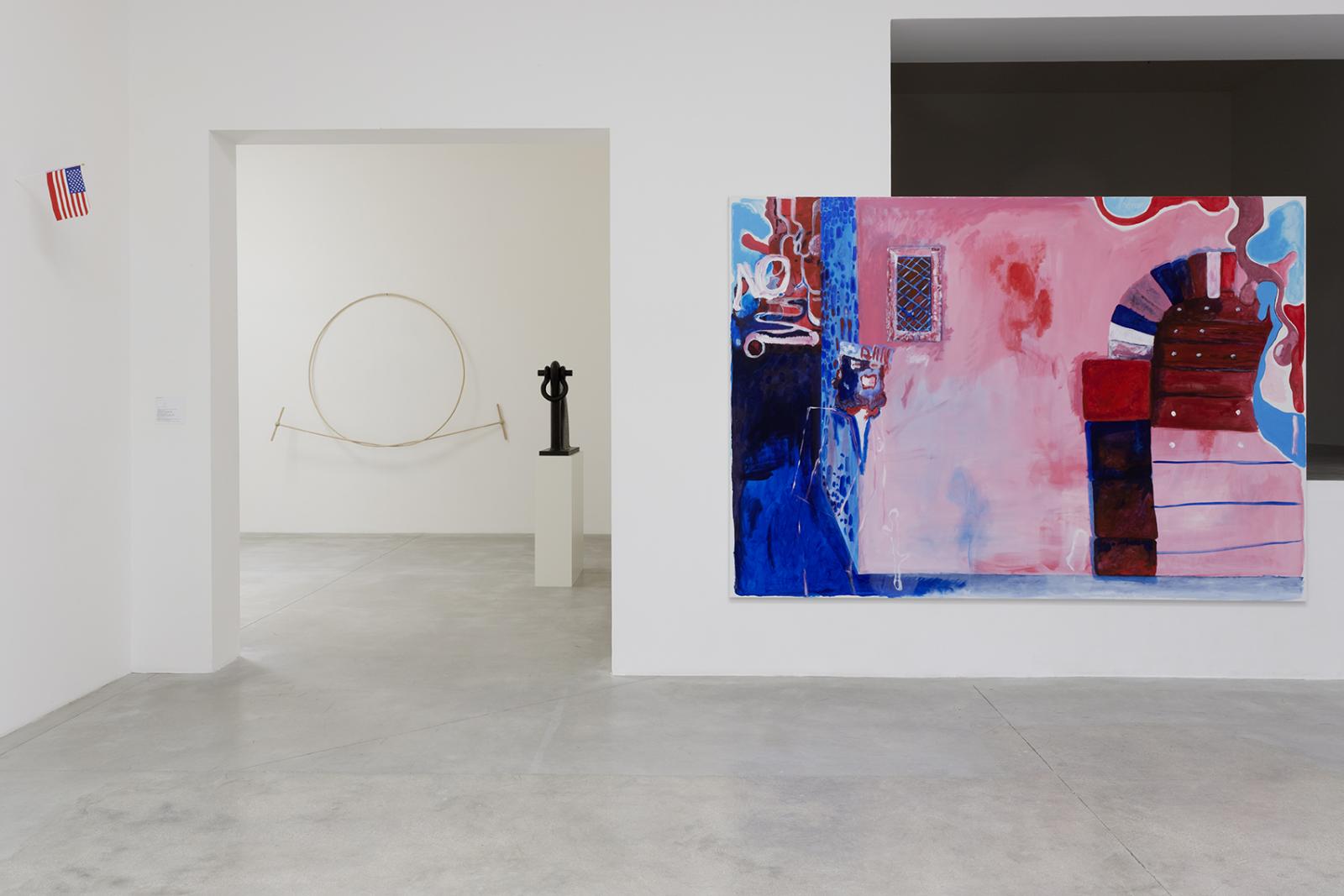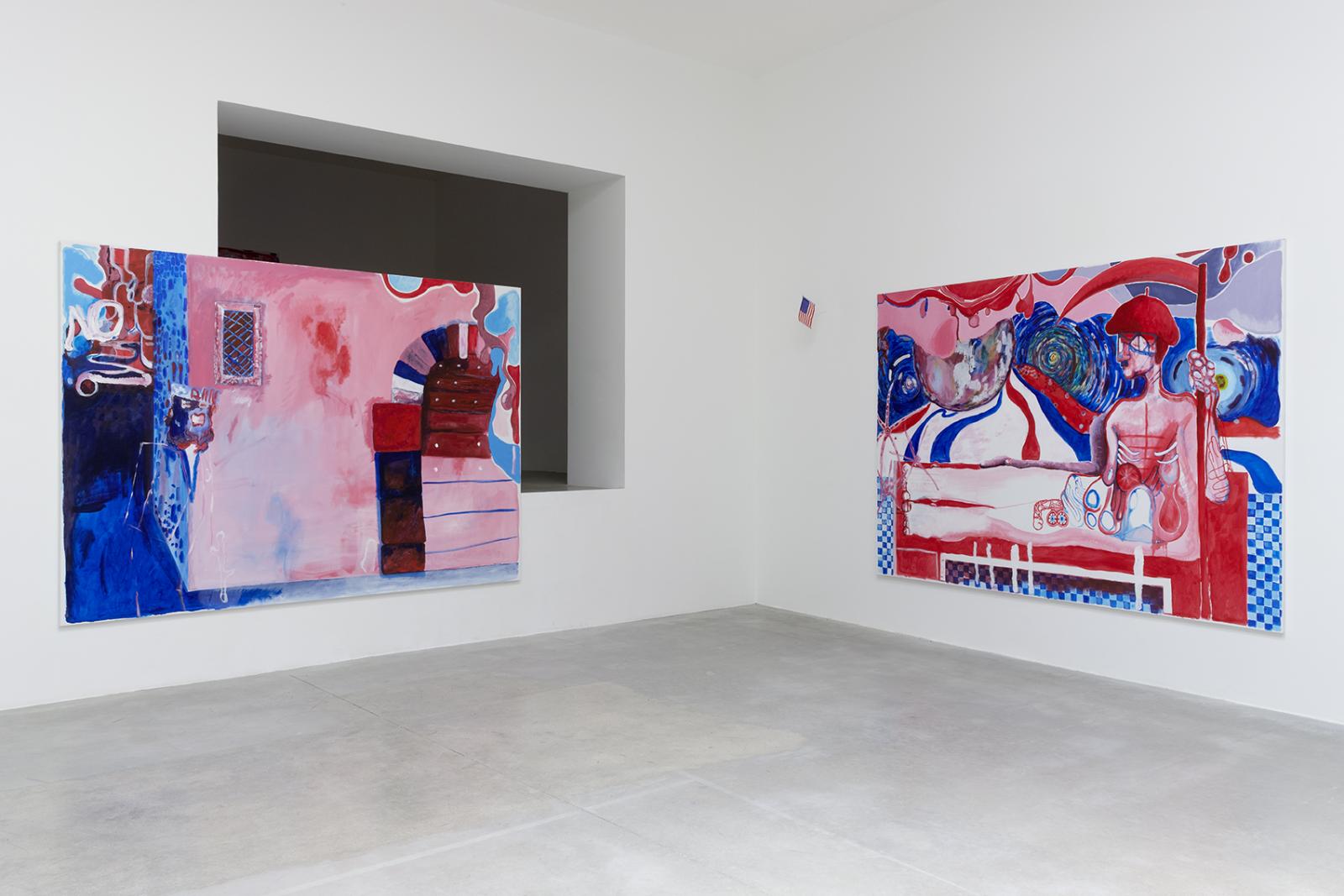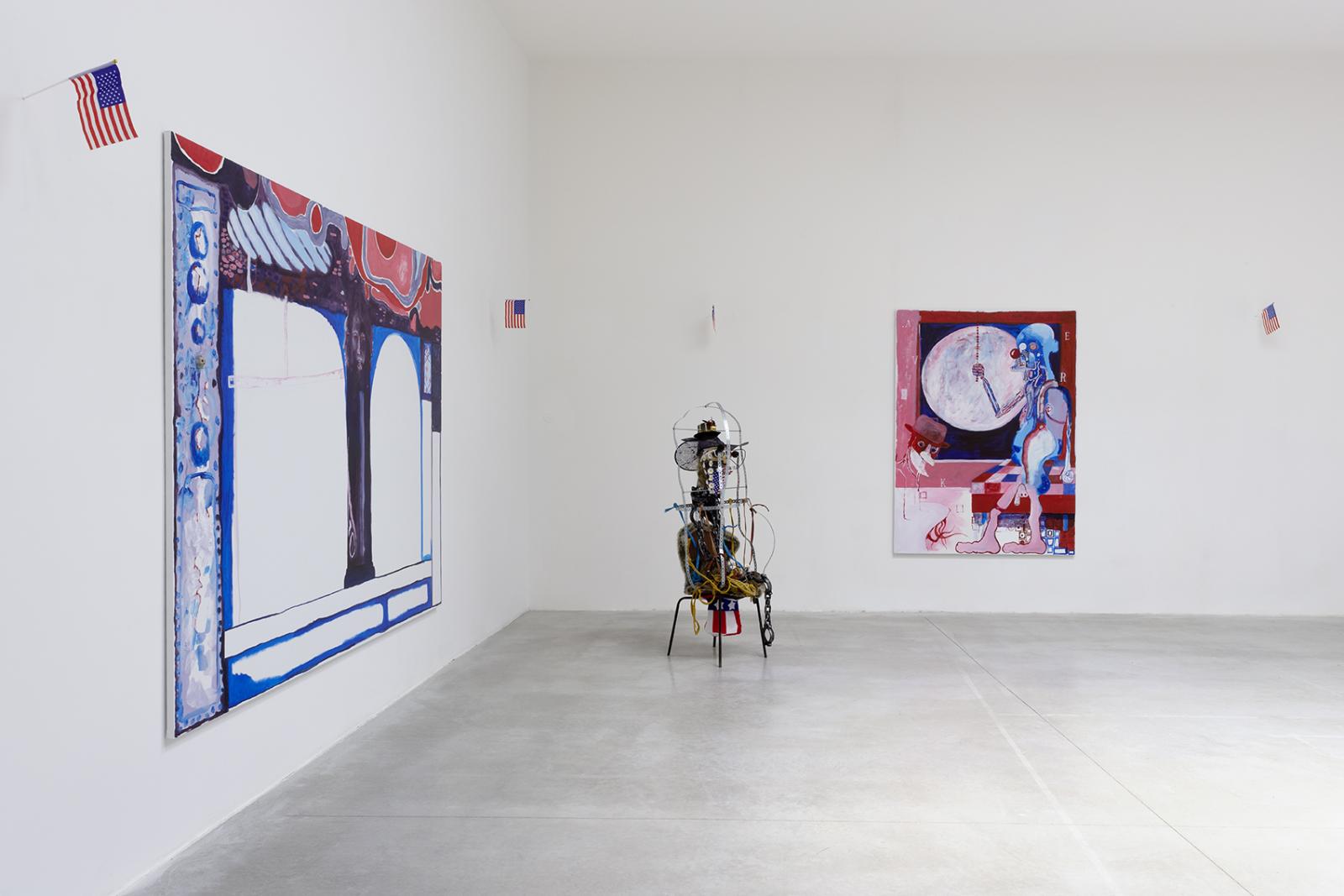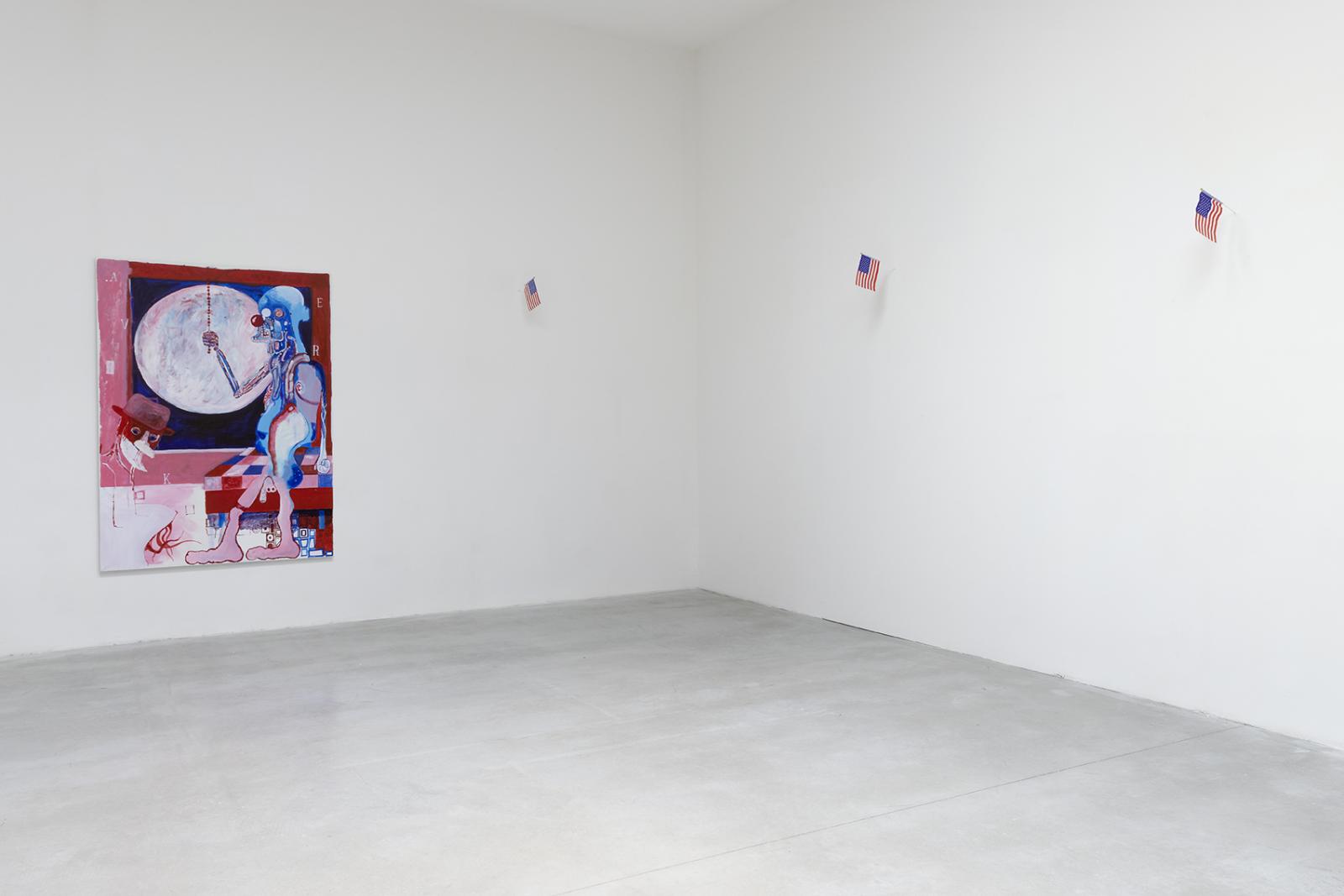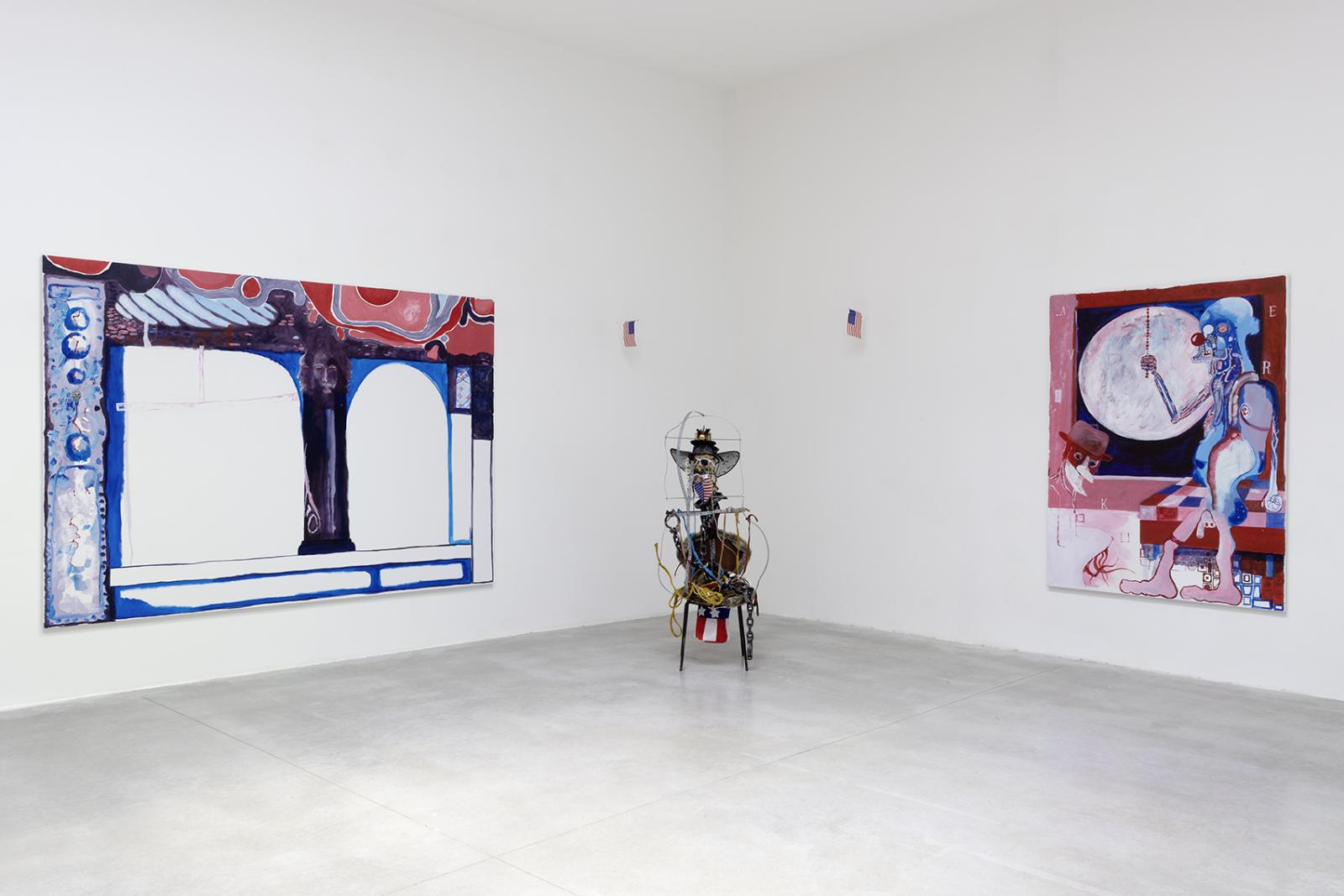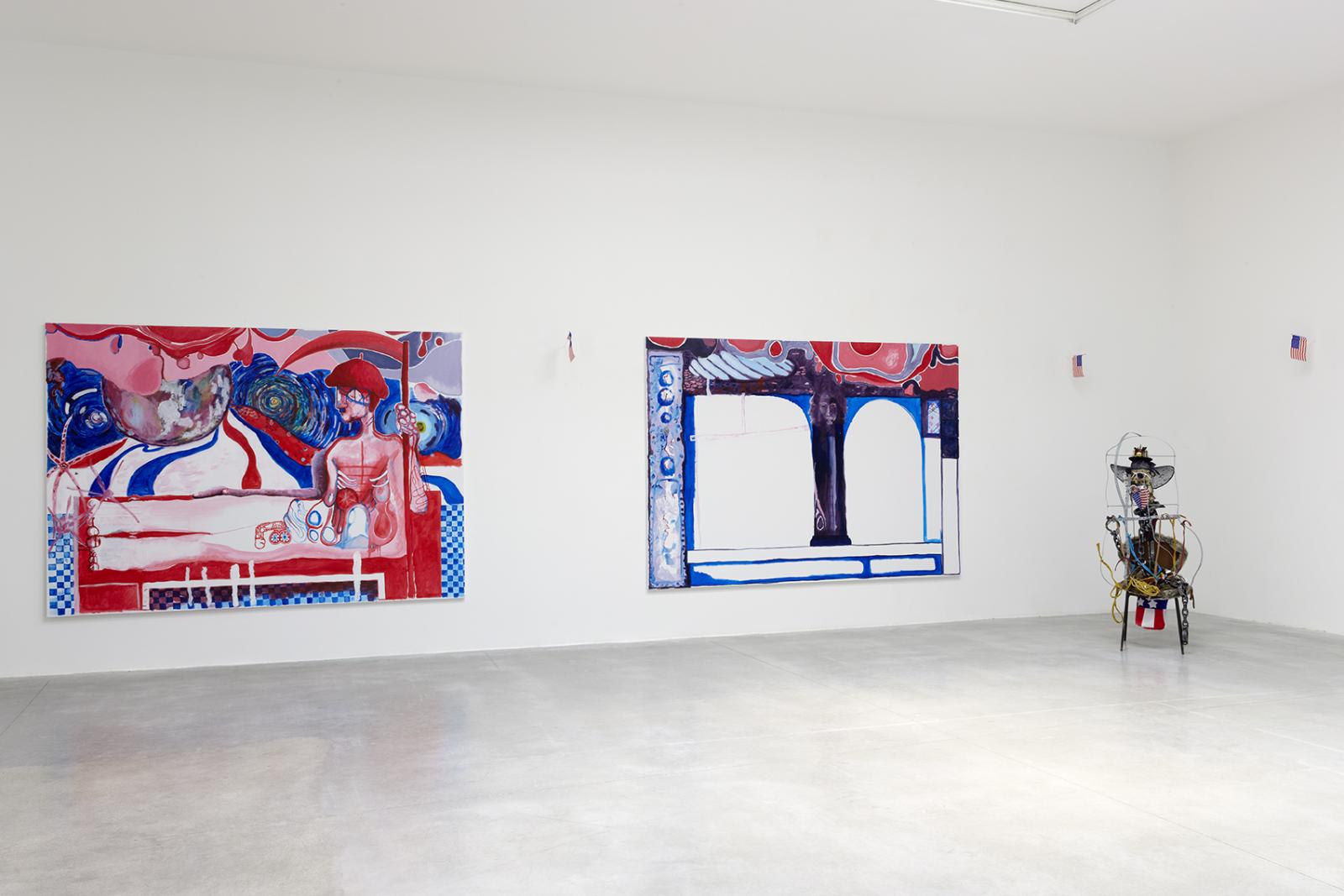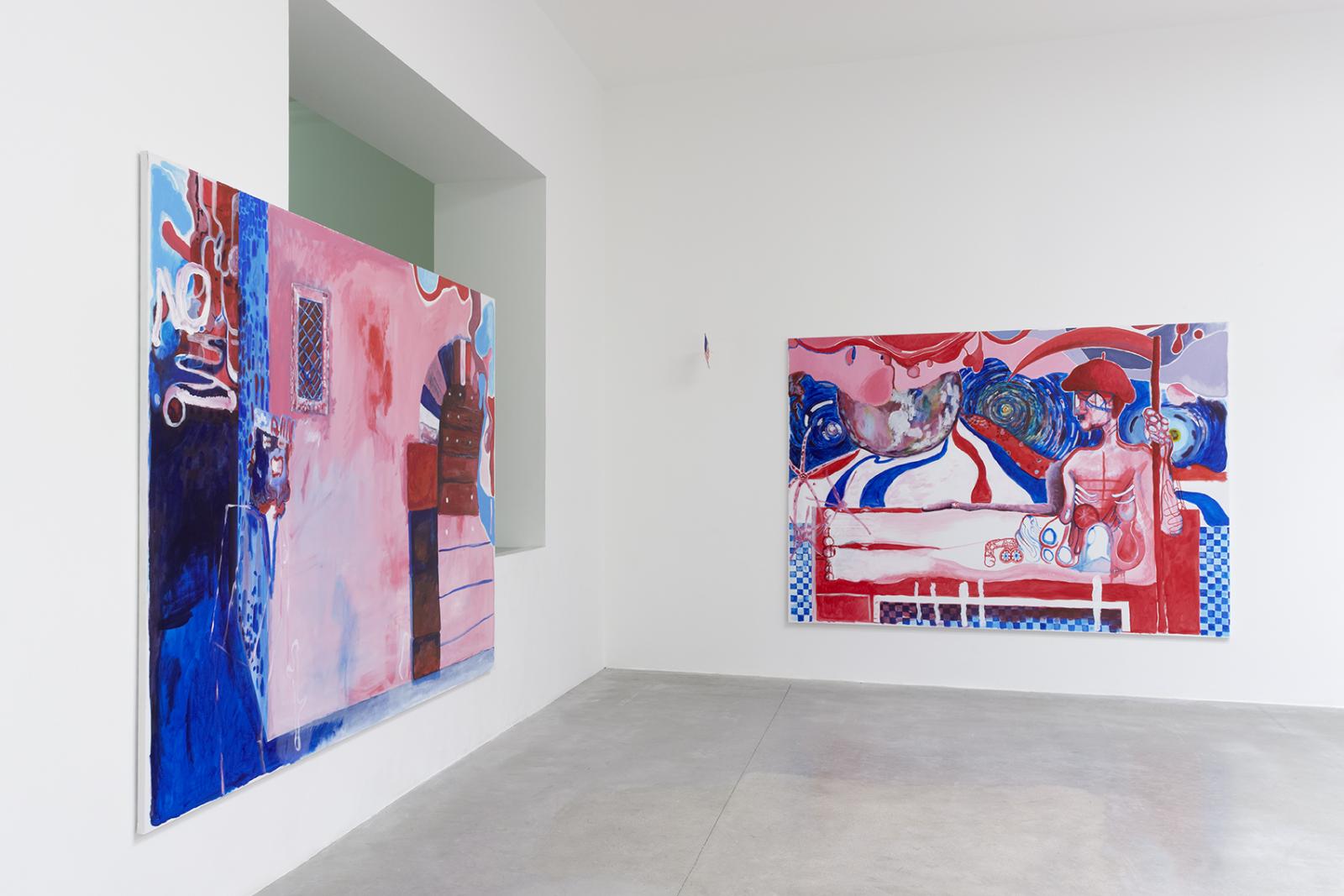Renaud Jerez
L'Almanach 18 : Renaud Jerez
Specifically conceived for L’Almanach 18, Renaud Jerez’s new paintings linearly connect with the architecture of Le Consortium’s space. These paintings, all sharing an identical large-scale format, which Jerez describes as “materialist, maniacal, and depressive,” as atonal as they are monochrome (blue, white, pink) have the texture of industrial canvas, the glaze of linseed oil, and the dryness of diluted acrylic. In their overall homogeneousness, we glimpse a few impressionist touches, in the style of the Water Lilies, but also and paradoxically a whole geometrical and symmetrical system, flattened perspectives that relate to the mechanical rigidity of a grid. For the artist, these are “extreme figurative paintings,” like we would speak about “extreme” sports, which literally find their source in Superdupont, the famous character by French comics artist Gotlib, a parody of a superhero, a heroic and naked painter. To this prosaic reference is added an objective style of pixelized, atomized representation, which refers to the heterogeneousness of other contemporary works theoretically associated with the provisional painting non-movement.
A figurative sculpture is found in a walking position in the center of the painting; a dark and comical doll between cyborg, tramp, and monster.
The installation conceived by Jerez for L’Almanach 18 more generally refers to the worlds he has been inventing for ten years in which a depressive, funny, strange and discordant dramaturgy takes is staged each time; landscapes composed of fictions in ruins and theories in crises, where the corporal, artefactual, visual, and virtual jostle together.
A world like a “black mirror,” to take up the title of one of his recent exhibitions, which poses less the question of the human than that of the humanity of the thing. Consequently, the degraded and collapsed sculptures cobbled together for which he is known are not so much futurist visions nor even dystopian embodiments as they are new creatures of the interstice looking at the structure, architecture, exhibition, city, and, sometimes, art as well. For the sake of convenience, Renaud Jerez has often been linked to a so-called “post-Internet” generation, with which we could easily identify, in which we could project an esthetic and political alternative. Jerez’s work cannot be reduced to technoculture, but poses with a certain amount of concern the question of the (re)production and construction of things, of their determinism.
To the question of representation and of what is impossible to represent another one follows through, which is how to “join together” the parts and the whole, the contingent and the mutant, how to diffract and how to link together?
—Stéphanie Moisdon
